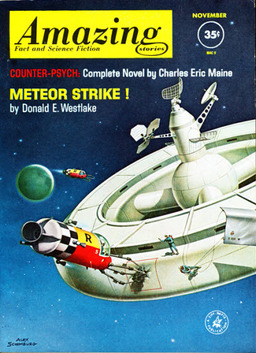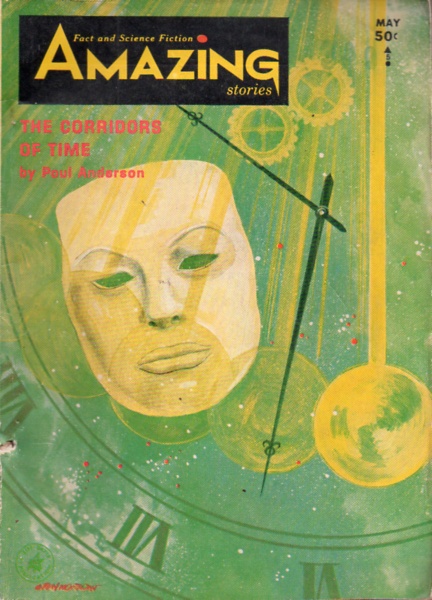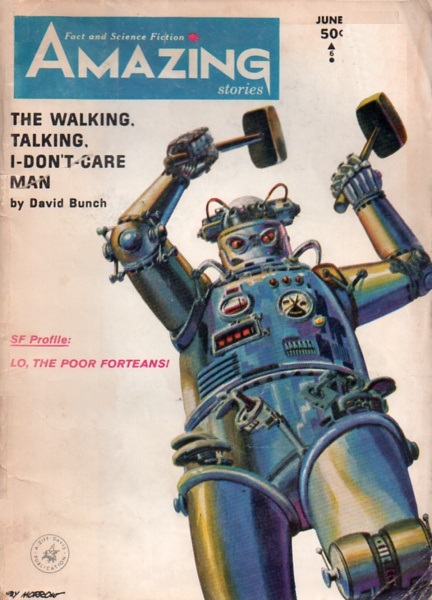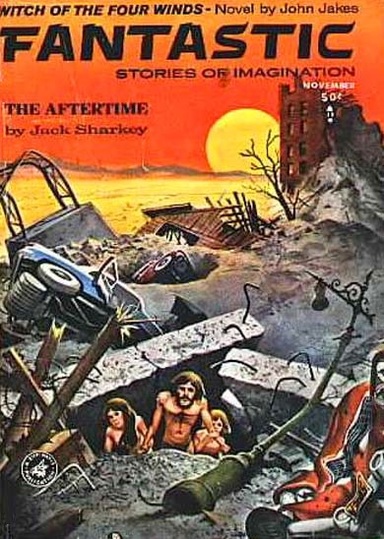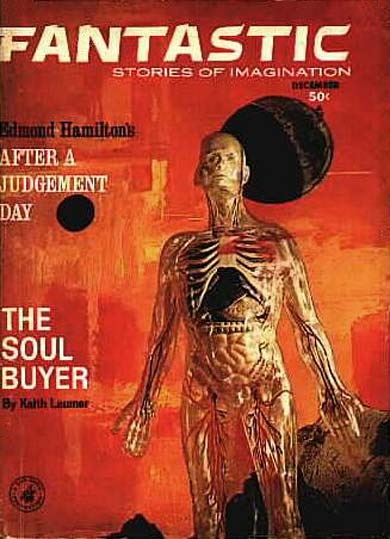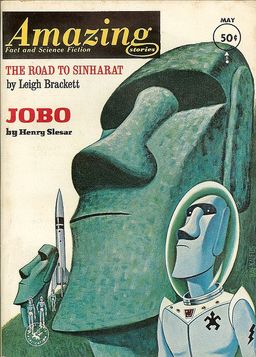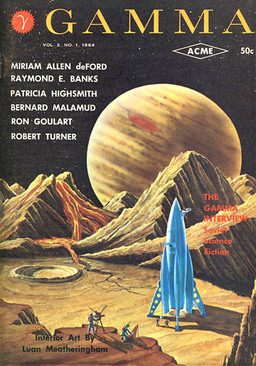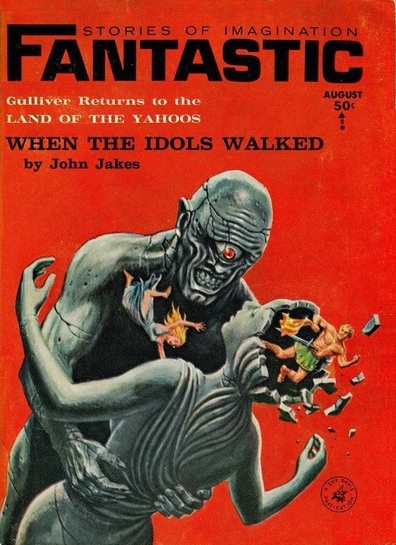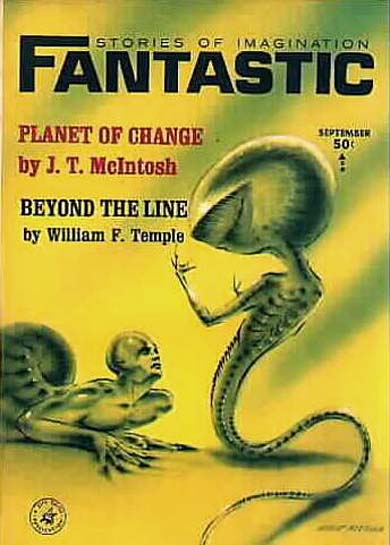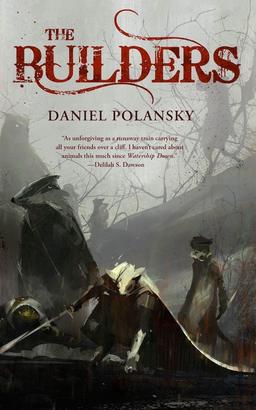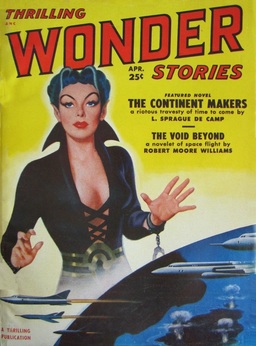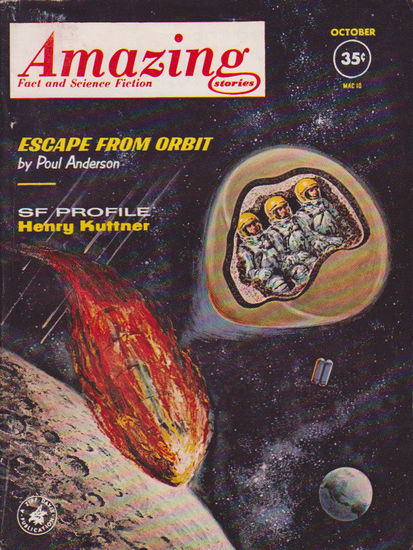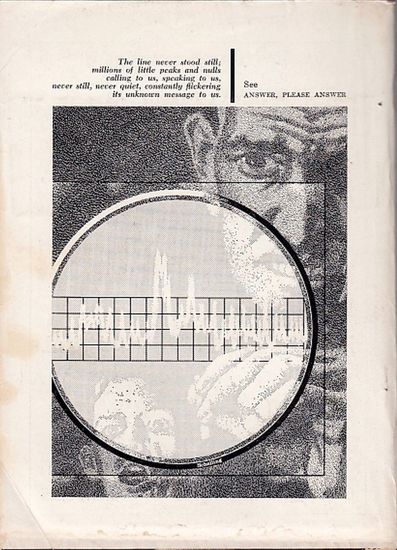Fantastic, June and July 1962: A Pair of Retro-Reviews
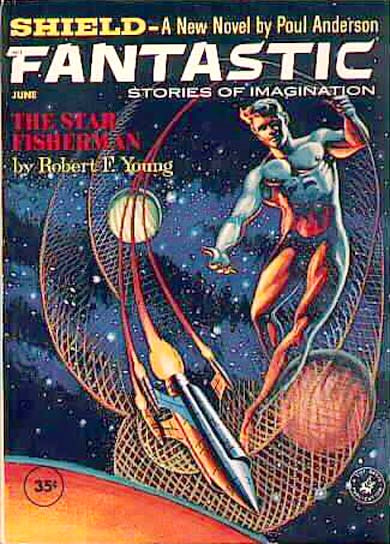 |
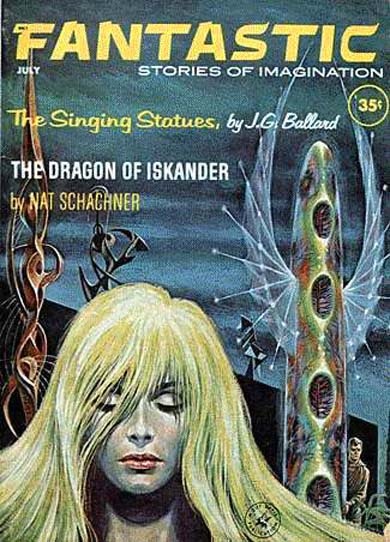 |
| Cover by George Barr | Cover by Emsh |
Another pair of Cele Goldsmith-edited issues of Fantastic, featuring a Poul Anderson serial. And an interesting letter on the subject of Mervyn Peake by Michael Moorcock.
The editorials, by Norman Lobsenz, consider a Russian project to increase silk production by selecting for male silkworms, and a theory that the physical constants may not be constant. The covers are by George Barr (quite good) and Ed Emshwiller (not his best). Interiors are by Leo Summers, Dan Adkins, Emshwiller, and George Schelling.
The letter column was quite irregular in Fantastic, but it’s present in the July issue, for something of a special occasion, perhaps. Michael Moorcock, then a very young writer (his first story, in collaboration with Barrington Bayley, appeared in New Worlds in 1959, and his first solo work in 1961 in Science Fantasy), had read comments about Mervyn Peake and his Gormenghast books in Fantastic earlier that year, and he wrote to mention that Peake (whom he knew well) was seriously ill and unlikely to write another Titus Groan book.
